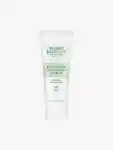Facial Scrubs
Every formulation for every skin type, to reveal soft, smooth glowing skin
24 results
24 results
Sort by
Refillable






Election Finalist
Showing 24 of 24
Related Categories
- 129
- 271
- 416
- 217
- 85
Facial Scrubs
A face scrub is your express ticket to smoother and softer skin. A physical exfoliator uses small beads or granules, like dissolving sugar or ground nut shells, to manually (and gently!) buff away dry and rough skin, dislodge debris and clear out pores, leaving your complexion looking and feeling more clarified, refined and radiant. At MECCA, we stock a selection of face scrubs for all skin types, from dry and sensitive to oily and acne-prone, so you can find your scrub match.

